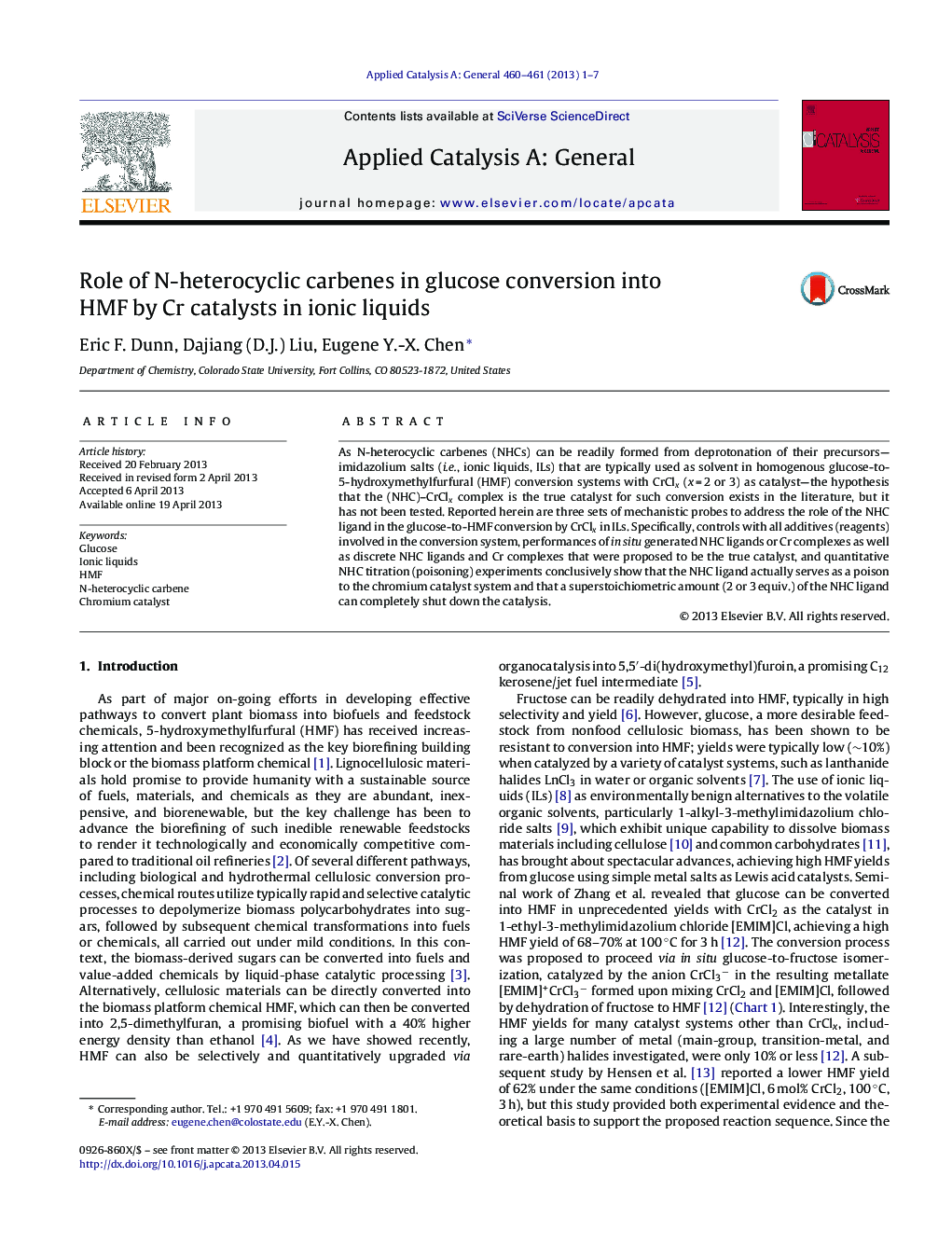| کد مقاله | کد نشریه | سال انتشار | مقاله انگلیسی | نسخه تمام متن |
|---|---|---|---|---|
| 40210 | 45846 | 2013 | 7 صفحه PDF | دانلود رایگان |

• NHC ligand has a negative effect on the Cr-catalyzed glucose-to-HMF conversion.
• NHC ligand poisons the Cr catalyst.
• Excess NHC ligand shuts down the conversion catalysis.
As N-heterocyclic carbenes (NHCs) can be readily formed from deprotonation of their precursors—imidazolium salts (i.e., ionic liquids, ILs) that are typically used as solvent in homogenous glucose-to-5-hydroxymethylfurfural (HMF) conversion systems with CrClx (x = 2 or 3) as catalyst—the hypothesis that the (NHC)–CrClx complex is the true catalyst for such conversion exists in the literature, but it has not been tested. Reported herein are three sets of mechanistic probes to address the role of the NHC ligand in the glucose-to-HMF conversion by CrClx in ILs. Specifically, controls with all additives (reagents) involved in the conversion system, performances of in situ generated NHC ligands or Cr complexes as well as discrete NHC ligands and Cr complexes that were proposed to be the true catalyst, and quantitative NHC titration (poisoning) experiments conclusively show that the NHC ligand actually serves as a poison to the chromium catalyst system and that a superstoichiometric amount (2 or 3 equiv.) of the NHC ligand can completely shut down the catalysis.
The results of this study employing three sets of mechanistic probes show that the N-heterocyclic carbene ligand actually serves as a poison to the chromium catalyst used for glucose conversion to HMF and that a super-stoichiometric amount of such ligand can completely shut down the catalysis.Figure optionsDownload high-quality image (118 K)Download as PowerPoint slide
Journal: Applied Catalysis A: General - Volumes 460–461, 10 June 2013, Pages 1–7